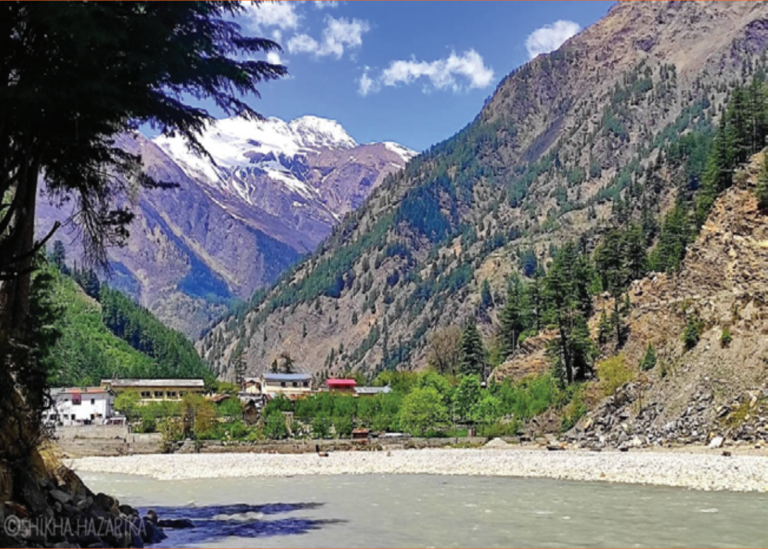Known as the gateway for the ‘Chota Char Dham’, Uttarkashi, a picturesque town resting in the pristine Garhwal Himalayas, is a place abounding in stunning beauty. Visit to this virgin destination offers an opportunity to experience its mystical presence. Famous for its religious heritage, this exclusive destination is preferred by thousands of tourists to spend their leisure time. The majestic mountains, breathtaking valleys, serene lakes and rivers, dense forests, beautiful temples and more, make Uttarkashi a perfect place for trekkers and nature lovers to explore.
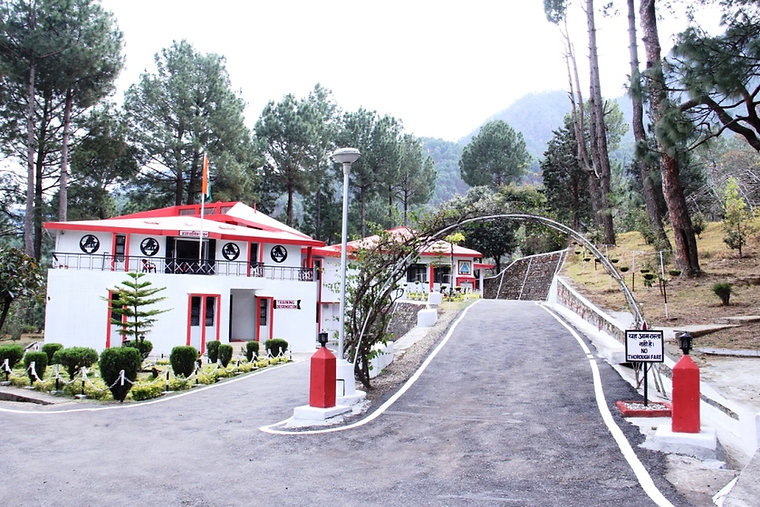
‘Kashi’. The utterance of this one word carries a mysterious yet peaceful vibrations that touches a chord in my heart and I’m sure this happens with every individual who believes the sense of connection to something beyond self. They say, the city, known as ‘Varanasi’ today is older than the civilisation itself and that Lord Shiva himself dwells here.
And then, there is this place called ‘Uttarkashi’ (North Kashi), a town and headquarters of the district of the same name in Garhwal division of Uttarakhand. This place is also popular as ‘Saumya Kashi’ and ‘Shivnagri’. But, have you ever wondered why this place is called ‘Uttarkashi’? Well, apart from the mythological beliefs, here’s an interesting geographical fact behind the names in common. The land between the confluence of Varuna and Assi with Ganga is known as Varanasi. There are only two places on earth where this geographical phenomenon takes place – one is Kashi, also known as Varanasi (Banaras) and the other is Uttarkashi (Kashi of North).
Situated on the banks of Bhagirathi, this holy town – Uttarkashi is most popular as the gateway for the ‘Chota Char Dham’, the small Hindu pilgrimage circuit of four abodes/seats: Kedarnath, Badrinath, Gangotri and Yamunotri, established by the great Hindu philosopher, sage and thinker, Adi Shankaracharya. Also, this sacred town of natural beauty is the headquarters of the district of the same name.
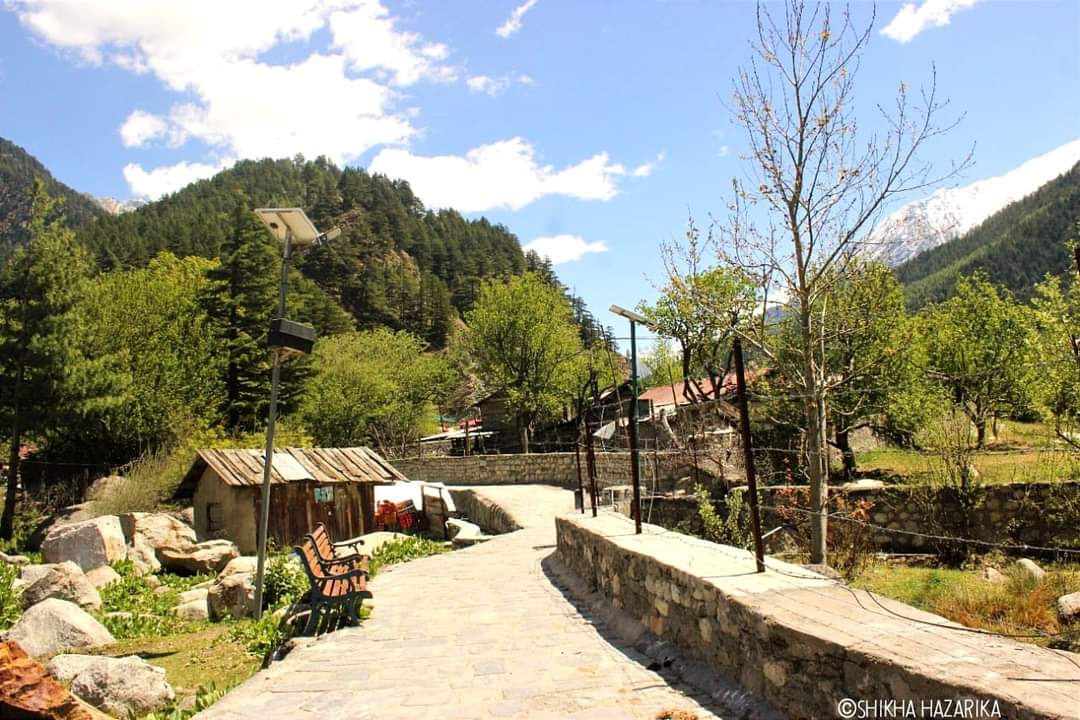
Uttarakhand also called Dev Bhoomi (Land of Gods) is undeniably a perfect pilgrimage destination but with the bonus of nature as a treat to the eyes and the inescapable adventure! So, buckle up for these amazing sites in one zone that will leave you enthralled.
Road trips to the mountains are always thrilling and one will never regret experiencing it when a place like Uttarkashi at an altitude of 1158 m above sea level will drive you crazy with its captivating views. Also, here I need to mention that I have been fortunate enough to visit this place in two different seasons, beginning of winter and spring. The snow-capped peaks, pristine rivers, and lush green valleys make this place no less than a paradise for travelers seeking an unforgettable experience.
This mesmerising place as a district is a land of geographical contrast with the majestic mountains, valleys, meadows, hiking trails, lakes, rivers, forests, temples etc., making it an explorer’s hub. However, during my first trip to this zone, I was totally clueless about the hidden gems. After reaching Rishikesh, it was a random decision to take the route towards Uttarkashi and find out what could be worth exploring.
Monastery of the mountaineers
So, having travelled nearly 168 kms from Rishikesh, Nehru Institute of Mountaineering (NIM) which has produced numerous stalwarts who have conquered some of the world’s highest peaks was my first halt. Perched atop turtleback hill on the east bank of the river Bhagirathi, this institute stands as a beacon for adventure enthusiasts and aspiring mountaineers. This is also the second oldest mountaineering institute in India and one of the premier institutes in Asia. Founded in 1965, NIM was established in honour of India’s first Prime Minister Pandit Jawaharlal Nehru. Its inception aimed to foster the spirit of adventure and instill mountaineering skills among the youth.
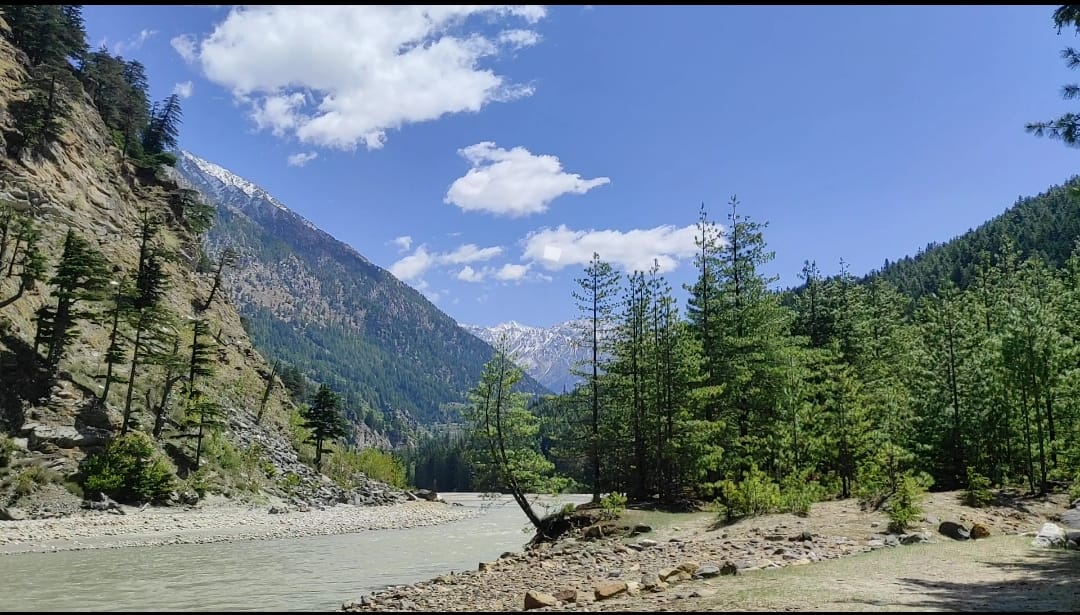
Surrounded by mountains and river Bhagirathi gushing on one side, NIM campus has all that can be called a scenic view. It is a beautifully constructed and meticulously planned campus that maintains all its flora and fauna in the area by being a home to several species of birds and beautiful Himalayan garden with plants that grow at high altitude. Gadgets required for trekking and mountaineering can be hired here. Since, I had a chance to stay at the guest house of NIM, I feel the need to mention here that the warm hospitality and food made my stay perfect. There are also many other alternatives of accommodation including Garhwal Mandal Vikas Nigam, forest and PWD guest houses besides the private hotels. A walk through the campus and a visit to the museum are activities that one should not miss. Unquestionably, the rich history, comprehensive training programmes, and the breathtaking beauty of Uttarkashi make it a must-visit destination for anyone with a penchant for great outdoors. My stay at NIM also gave me a chance to figure out my next destination.
Raj Kapoor’s love story
My next halt was the spectacular Harsil Valley. Raj Kapoor’s superhit film Ram Teri Ganga Maili was extensively shot here. It is said that the film thespian was so mesmerised with the panoramic views of the valley during an earlier visit that he decided to shoot his next film with his son Rajiv Kapoor and actress Mandakini here. People also believe that since Raj Kapoor wanted to shoot the film in Harsil is why the story of the film developed as such and named after the River Ganga that flows through the valley. Interestingly, the Post Office of this village that was featured in several scenes of this movie released in 1985 has today turned into a centre of attraction for tourists. Set up in a rented house in 1960, built of wood and local materials, this post office is the sole connection of the locals and neighbouring villages with the outside world.
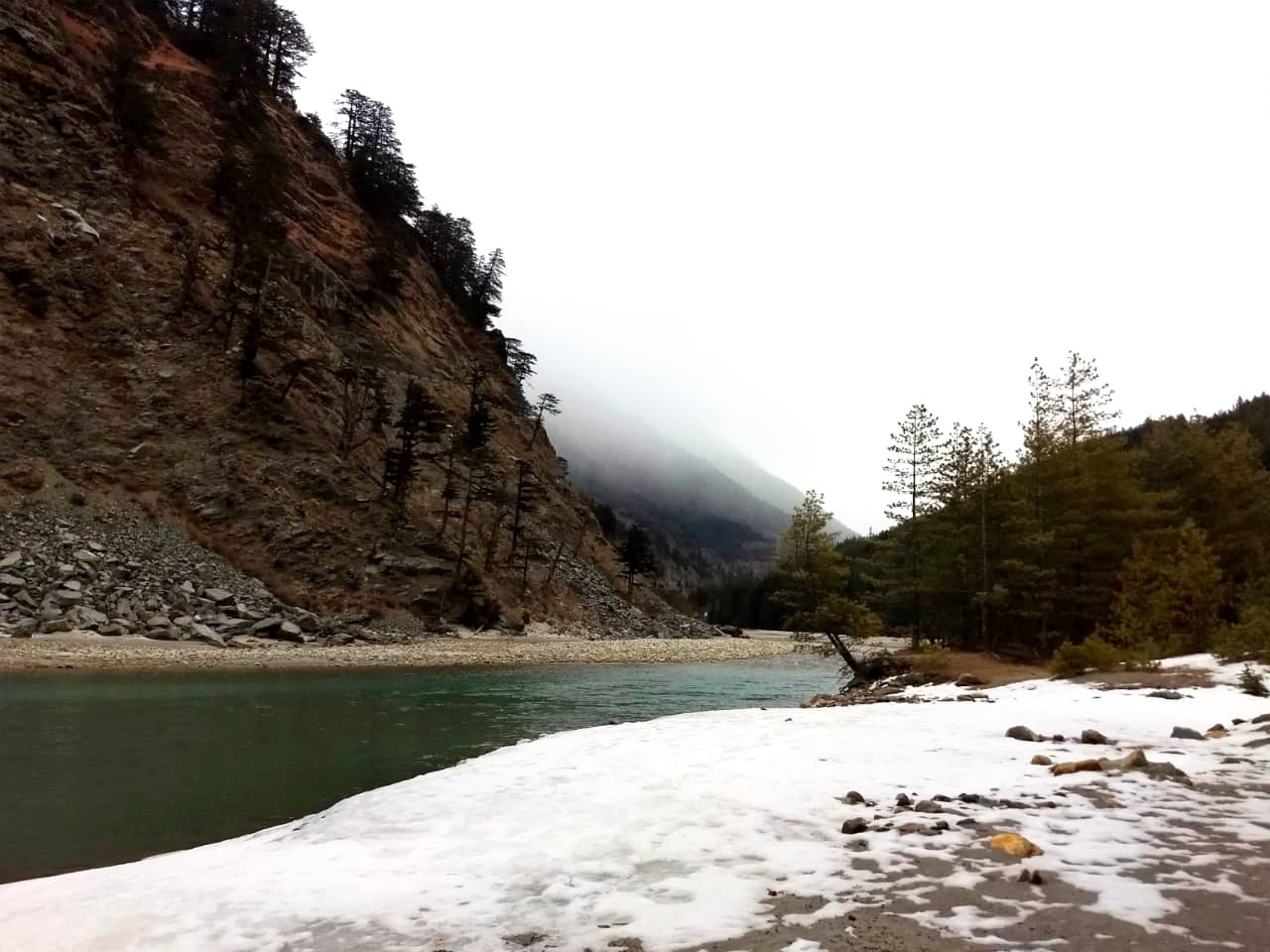
Tucked away amidst green valleys, sleepy meadows the beauty of the place is unmatched with never-ending views of apple orchards, dense jungle, the meeting of Bhagirathi and the Jalandhari rivers, and the scenic backdrop. The quaint village Harsil lies at an altitude of 7860 feet and is located 70 km ahead of Uttarakashi and 23 km before Gangotri on the Uttarkashi – Gangotri Highway. It is also an army cantonment area with only a few houses, guest houses, small market and local dhabas (wayside eateries).
When you’re in Harsil, you’ll come across this renowned property called ‘Wilson House’. The story behind this cottage is also legendary. Raja or Pahadi Wilson is one name in this locality that is familiar to every resident. In 1864, Frederick. E. Wilson who deserted the British army and escaped into the Garhwal mountains where he met the king of Tehri and sought shelter. However, the king refused so Wilson move to this remote village where he fell in love with a local Pahadi (mountain) girl from a nearby village Mukhba. They married and settled in Harsil village. Without the knowledge of the king, he started his business here by selling deodar trees/wood to Britishers by floating them in the river. This was sold for railway construction. By selling these rail sleepers he became so rich and powerful that he started his own currency coins which were even available with the locals till the 1930s. But later, he acquired a lease from the king and started sharing the profits. Notably, the revenue of the king of Tehri went up ten times. He also built a 350 ft long suspension bridge over Jadganga for the local people. Unfortunately, today only the traces of this bridge remain. He also built his own mansion in the village which later on caught fire and turned into ruins. The cottage has been restored by the Forest Department and converted into Forest Guest House. Wilson also introduced the villagers to apple cultivation and gradually became popular among the locals as ‘Pahadi Wilson’.
After so many decades, be it through the popular tales of Pahadi Wilson or Raj Kapoor’s superhit film, Harsil valley continues to retain its charm, beauty, and vitality. In fact, the drive through valley left me yearning for more. I fulfilled this deep desire by visiting the valley again in the next spring.
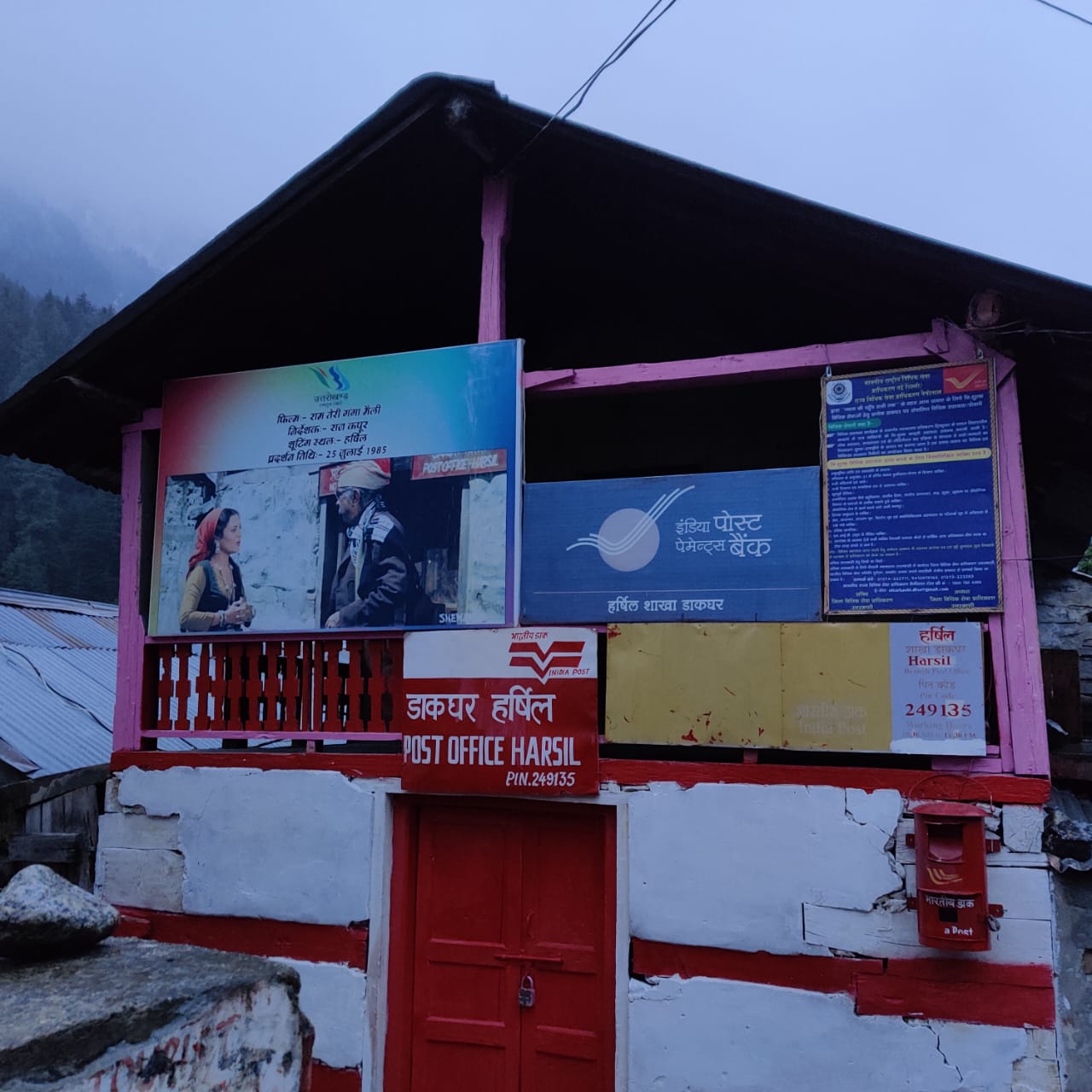
The celestial flow
During my first visit in November, I had made an attempt to reach Gangotri, which was not a good idea as the area had witnessed its first snow shower a few days before my arrival. Also, by this time of the year, there are restrictions in tourists’ movement further from a point called Bhaironghati which is 19 km ahead Harsil. I had to return from the parking lot of the temple which was completely snow covered and deserted making it appear like a ghost town.
As they say, whatever happens, happens for good! So, was it in my case because my next visit during spring, unclogged such sites which were no less than unexplored gems. So, this time right after a halt at Harsil village for few hours, I headed straight to Gangotri Temple, which is 25 km from the village. On the way lies Dharali (about 6 kms from Harsil) which is also famous for its apple orchards and Bhairav Temple at Bhaironghati. It is believed that Lord Shiva appointed Bhairav to safeguard the region.
The ride to Gangotri Temple was really beguiling as the road is well developed offering stunning views of the coniferous forests and grand mountains. The excitement to see the highest temple located at an altitude of 3048 metres was at peak and having parked the vehicle, I hurried towards the temple. Gangotri legends, history, and significance are as fascinating as they are mysterious. This picturesque pilgrimage in the hinterlands of the Himalayas is the most sacred spot where Ganga, the stream of life, touched earth for the first time.
This ancient narrative revolves around King Bhagirath’s relentless pursuit to bring the divine River Ganga down to earth to absolve his ancestors’ souls. A tale of devotion, determination, and divine intervention, it showcases the pivotal role played by Lord Shiva in ensuring the successful arrival of the sacred river on earth. When Lord Shiva opened his matted hair, releasing a torrential flow of Devi Ganga, she cascaded from the heavens with tremendous force, her cascading waters threatening to engulf the entire earth. But Lord Shiva, with his divine presence, skillfully captured Devi Ganga in his matted locks, channeling her immense power through his tresses. It is said people have been immersing the ashes of their departed ancestors in the waters of this holy river even since.
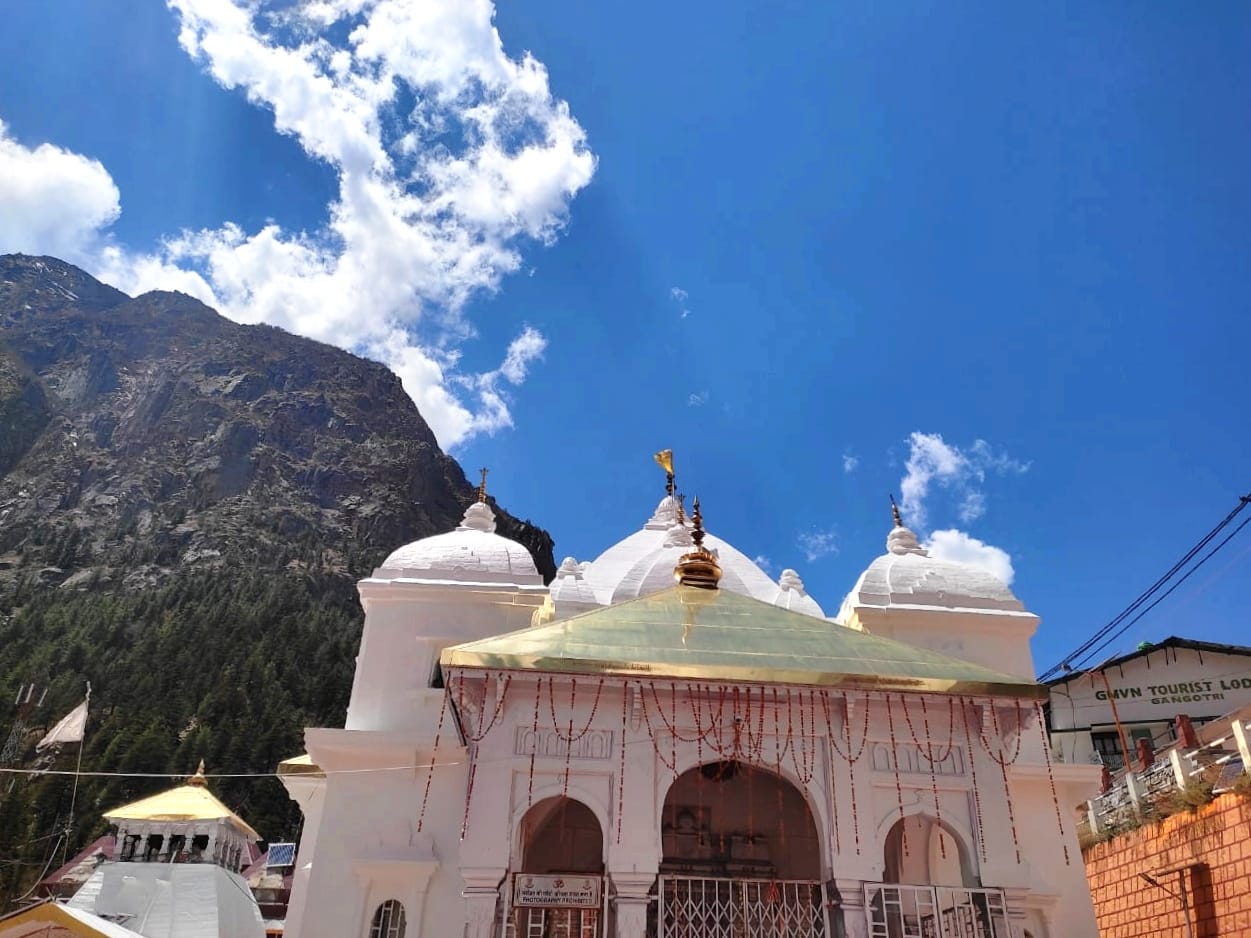
In another legend, Ganga was a beautiful living woman born in the kamandalu (water vessel) of King Brahma.
Notably, the actual origin of the river is at Gaumukh in the Gangotri glacier, 19 km away from Gangotri and is accessible by trekking. After it originates from Gaumukh, the river is known as Bhagirathi and it acquires the name ‘Ganga’ after the river Alaknanda merges into it near the town of Devprayag. The temple was erected in the 18th century according to the Katyuri architectural style, common in Nepal and its surroundings, by a Gurkha Commander Amar Singh Thapa. The area has several hotels, guest houses and food points for tourist to have a comfortable stay. Gangotri becomes a bustling hub of devotees during the Char Dham Yatra season and it is in the month of May when the deity of Ganga is brought back from the nearby Mukhba village after the temple is reopened for the tourists. Soon after Diwali when the temple is closed during winter, the deity is taken to this village which is considered as Ganga’s maiden home.
In Gangotri you can also walk down along the river into the Cedar forest to visit the famous Pandav Gufa (Cave). The cave is located opposite to the bus parking on the main road. It is said that the cave is naturally formed and served as residence of Pandavas during their ascent to heaven.
Mini Ladakh in Uttarakhand
After the divine darshan of the Goddess at Gangotri, my next stop was Nelong Valley called the ‘Mini Ladakh of Uttarakhand’. Considered to be the best kept secret of Uttarkashi, I had been longing to visit this place. Least explored by tourists in that zone because it’s located on the Indo-China border and remained closed for the civilians after the 1962 war until 2015.
The valley is a charming treat for nature lovers and adventure enthusiasts alike. The cold deserted mountain area of Nelong Valley looks like a mini replica of Tibet. The terrain is very much like Ladakh.
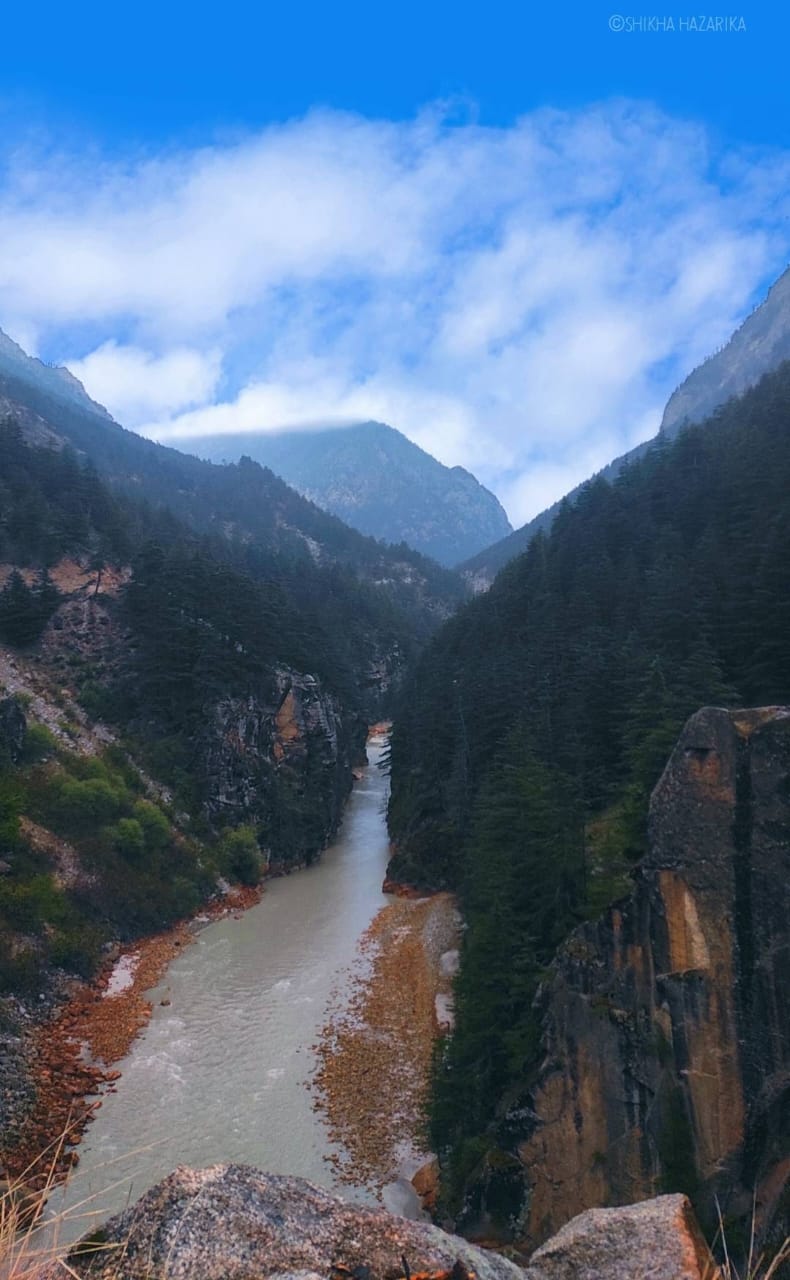
At a height of 11,000 feet, this valley actually offers a 360-degree clear and surreal view of the Tibetan plateau. The minimal human interference has helped in maintaining the mystery and appeal that raw nature holds. Long before Tibet was occupied by China, Nelong Valley was a bustling trade route between Tibet and India. In fact, the place has a rich history and culture which is lost in political unrest and border conflicts. The villages in the valley were vacated in 1962 during the Indo-China War. Since then the historic valley is occupied by endless army camps. The valley is also connected to the Gangotri National Park and you can get to see the endangered animals like Himalayan Blue Sheep, Snow Leopard and Musk Deer. The valley is also known for its high-altitude lakes such as Khatling and Masar Tal, which are popular trekking destinations. The valley is surrounded by the Bandarpunch and Swargarohini mountain ranges, and visitors can enjoy trekking, camping, and hiking in the area.
Before the Chinese aggression, Jadhang was the last village in this area with almost 70-80 households and this village served as a pitstop on the old trading route. The indigenous population living in the valley known as Rongpas or Bhotiyas, were later forced to migrate to Bagori village. Locals shared that each house in the village had beautiful wooden carvings; even the stones had carvings on them.
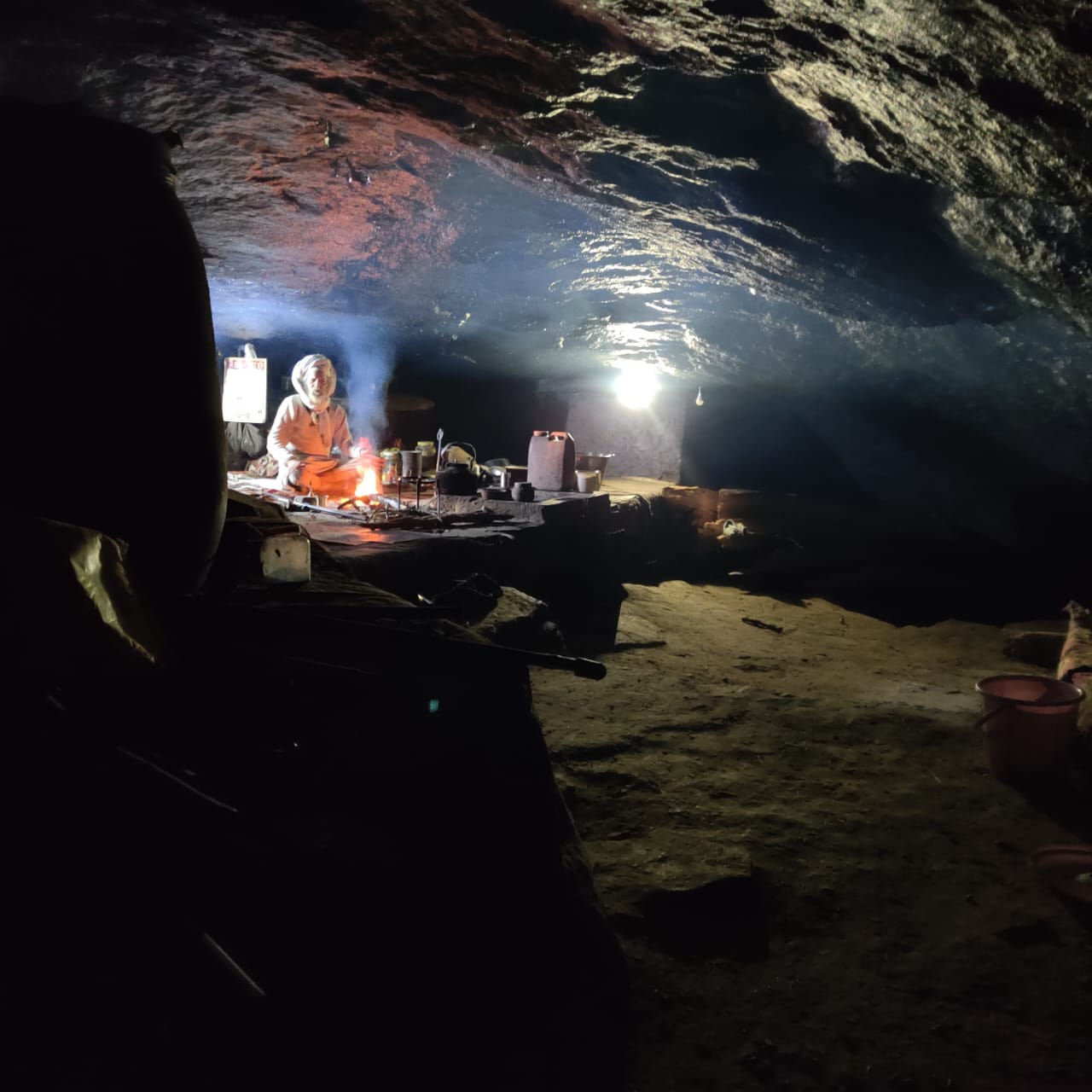
The wooden skywalk
The antiquity connected to the Nelong valley also brings one closer to another master piece of its time – the over 150-year-old trek route street, which is a rare path made by cutting huge mountains, which is known as Gartang Gali. This used to be the trade between China and Barhat Market, Uttarkashi which also shut down completely after the war. It is said that the Pathans, who came from Peshawar to Gartang Gali, built this difficult bridge 150 years ago at an altitude of 11000 feet. About 150 meters long stairs of Gartang Gali are now visible in a new colour and form with its wooden-lined staircase. The stairs of Gartang Gali, built at an altitude of 11,000 feet, are considered to be a unique example of engineering. This is a summer trek where you’ll get a combination of both greenery and snow, which makes the trek spectacular.
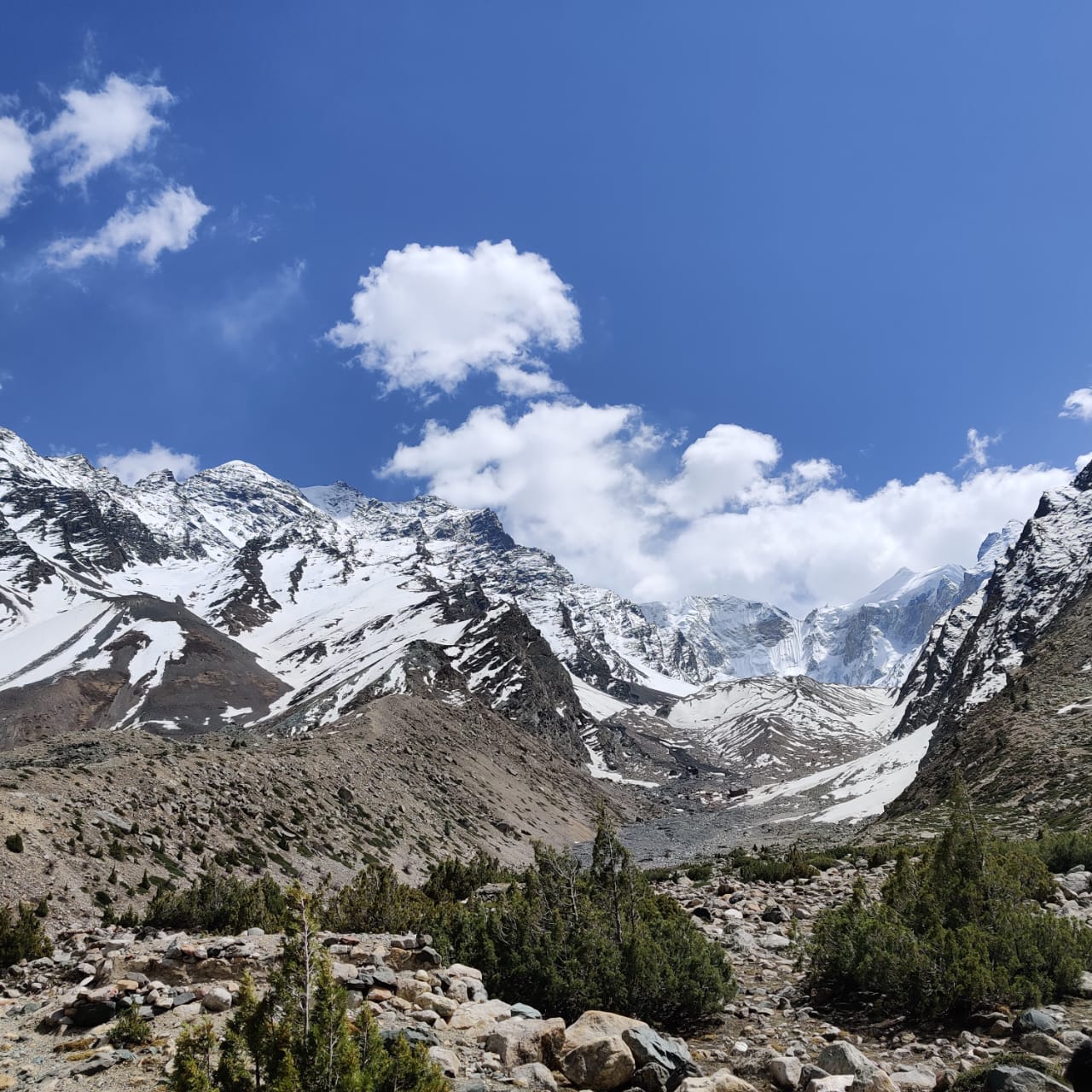
Even though travel to Nelong involves a great degree of planning, it is an experience that shall manage to enchant all visitors in its surrealistic charm.
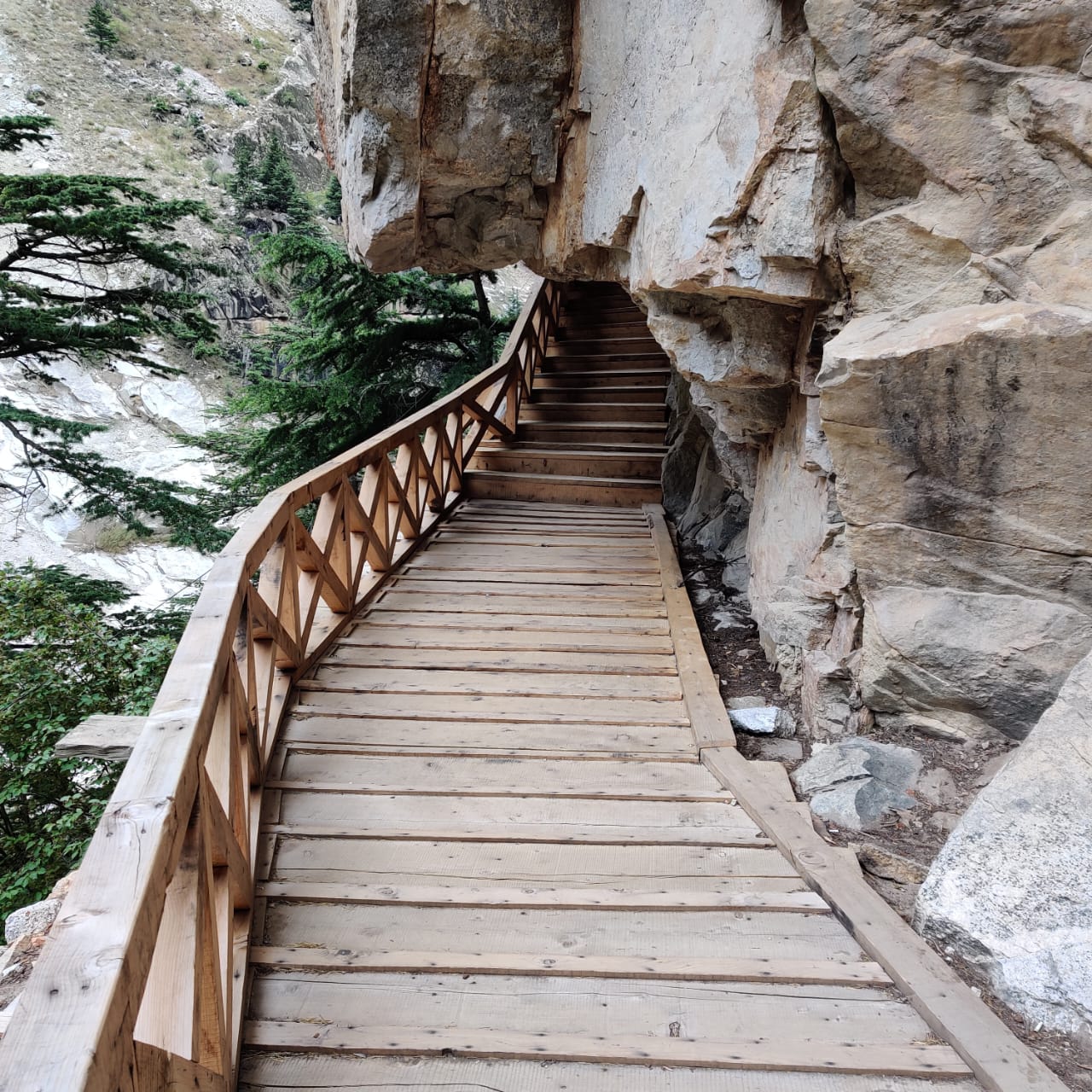
And with many other destinations yet to be explored in this mystical land of Uttarkashi, it was time for me to wrap up this part of the super exciting expedition. And like every destination leaves its own unique memory, I too carried with a bag full of mixed emotions to last a life time!

